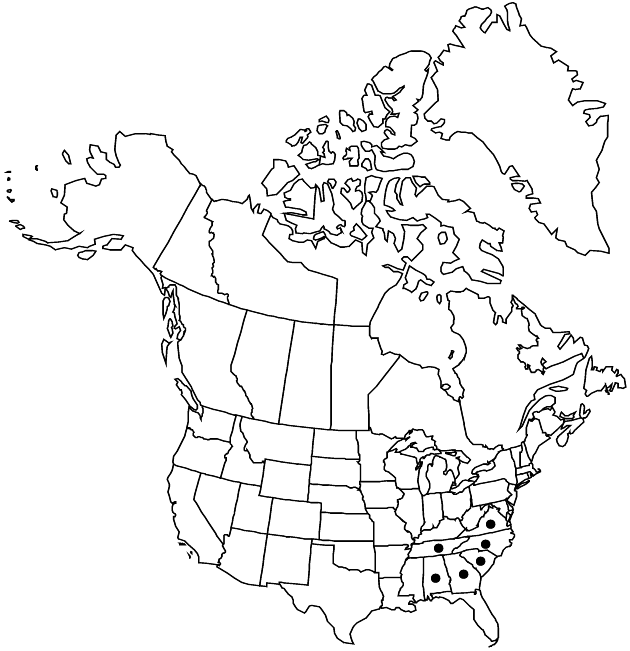Difference between revisions of "Symphyotrichum retroflexum"
Phytologia 77: 291. 1995.
FNA>Volume Importer |
FNA>Volume Importer |
||
| Line 8: | Line 8: | ||
}} | }} | ||
|common_names=Rigid whitetop aster | |common_names=Rigid whitetop aster | ||
| − | |basionyms={{Treatment/ID/ | + | |basionyms={{Treatment/ID/Basionym |
|name=Aster retroflexus | |name=Aster retroflexus | ||
|authority=Lindley ex de Candolle | |authority=Lindley ex de Candolle | ||
| + | |publication_title=in A. P. de Candolle and A. L. P. P. de Candolle, Prodr. | ||
| + | |publication_place=5: 244. 1836 | ||
}} | }} | ||
|synonyms={{Treatment/ID/Synonym | |synonyms={{Treatment/ID/Synonym | ||
| Line 54: | Line 56: | ||
|publication year=1995 | |publication year=1995 | ||
|special status= | |special status= | ||
| − | |source xml=https://jpend@bitbucket.org/aafc-mbb/fna-data-curation.git/src/ | + | |source xml=https://jpend@bitbucket.org/aafc-mbb/fna-data-curation.git/src/f6b125a955440c0872999024f038d74684f65921/coarse_grained_fna_xml/V19-20-21/V20_1138.xml |
|tribe=Asteraceae tribe Astereae | |tribe=Asteraceae tribe Astereae | ||
|genus=Symphyotrichum | |genus=Symphyotrichum | ||
Revision as of 18:40, 24 September 2019
Perennials, 40–100 cm, usually colonial, sometimes ± cespitose; short-(seldom long-)rhizomatous. Stems 1–2+, erect (straight to slightly flexuous, sometimes robust), glabrous. Leaves thin to firm, margins slightly recurved, scabrous, faces glabrous; basal mostly withering by flowering, petiolate (petioles narrowly winged, sheathing), blades lanceolate-ovate to ovate or spatulate, 25–110 × 10–40 mm, bases usually rounded to attenuate, seldom ± cordate, margins serrulate to shallowly serrate, apices obtuse to acute; proximal cauline often withering by flowering, petiolate (petioles ± widely winged, ± clasping), blades lance-ovate or narrowly ovate, 50–95 × 19–31 mm, bases usually rounded to attenuate, sometimes cuneate, rarely subcordate, margins serrate to serrulate; distal winged-petiolate or subpetiolate or sessile, blades lance-ovate or narrowly ovate to lanceolate or sometimes linear (in arrays), 7–1.5 × 3–31 mm, gradually and strongly reduced distally, bases cuneate, scarcely or not clasping, to slightly rounded and ± clasping, margins serrulate or entire, apices acute to acuminate. Heads in broad (appearing ± corymbiform) or narrow, paniculiform to ± racemiform arrays, branches usually long (to 10 cm), ascending to divaricate. Peduncles (when present) 0.2–1.5 cm, densely pilose or pilosulous, bracts 1–6+, lanceolate to oblong-lanceolate, foliaceous to distally grading into phyllaries. Involucres campanulate, (6–)7–10 mm. Phyllaries in 3–4(–5) series, broadly lanceolate constricted to narrow oblong bases (outer) to oblong-lanceolate or linear-lanceolate (inner), ± unequal, bases indurate 1/10–1/5 (outer) to 4/5+ (inner), margins hyaline, narrowly scarious, erose (indurate portion), sparsely ciliolate (foliaceous portion), green zones foliaceous (outer) to distal 1/5–1/4 foliaceous (inner), basally truncate to lanceolate, apices spreading to squarrose, acute to acuminate, mucronulate, abaxial faces glabrous or glabrate, adaxial strigillose (foliaceous portion). Ray florets 13–30; corollas blue to purple, laminae (10–)15–17 × 1.6–3 mm. Disc florets 35–50+; corollas cream to pale yellow becoming pinkish, 5.8–6.8 mm, tubes shorter than funnelform throats, lobes lanceolate, 0.9–1.2 mm, glabrous. Cypselae tan, obovoid to oblanceoloid, compressed, 3–3.9 mm, 4–6-nerved, faces glabrous or sparsely strigillose; pappi whitish to reddish, 5.3–6 mm. 2n = 48.
Phenology: Flowering Aug–Oct.
Habitat: Moist meadows, moist woodlands, dry, open, pine or oak woods, wooded roadsides
Elevation: 400–1500 m
Distribution

Ala., Ga., N.C., S.C., Tenn., Va.
Discussion
Symphyotrichum retroflexum is known only from the Appalachian Blue Ridges. It is possible that the species is an allopolyploid derived from members of subsections Cordifolii and Symphyotrichum.
Selected References
None.